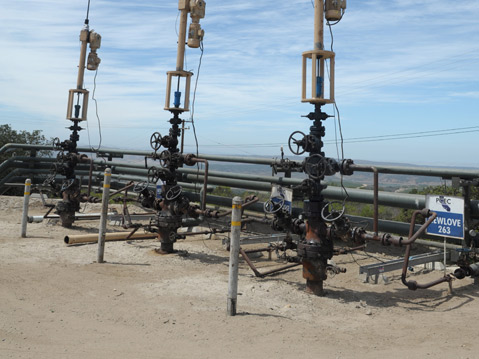Ventura Says No to New Cyclic-Steam Oil Drilling

The Ventura County Board of Supervisors has decided to extend a moratorium that prohibits new drilling or deepening of existing cyclical-steam oil wells in the Fox Canyon aquifer system. The decision is a result of the U.S. Geological Survey’s discovery of contaminants in water wells within and around the Oxnard oil field. Similar discoveries were made in Santa Barbara County and presented in late February at the USGS Stakeholder Meeting. At the time, USGS hydrologist Robert Anders made a presentation about four wells in Orcutt that had been found to be similarly contaminated with hydrocarbons and methane. Orcutt, which lies just South of Santa Maria, is home to 455 active or idle oil wells, in addition to 257 inactive oil wells. Santa Barbara County is taking a “wait and see” tactic on the USGS information, according to staffers, as the report is due in early 2020.
But in Ventura County, the supervisors decided to act on the potential threat of contaminated drinking water. The preliminary information revealed no toxic levels of contaminants – indeed, methane in and of itself is not a toxin – but without a specific request, the USGS and the State Water Quality Control Board would not investigate the source of the contamination, said Matt Guthrie, an aide to Ventura Supervisor Kelly Long. Gases were common in the area, so the source could be natural or due to the oil and gas operations, Guthrie explained. The supervisors chose to impose a six-month moratorium, send a letter to the agencies requesting information, and direct its staff to develop county regulations to address such contaminants in their drinking water.
The tests in the Oxnard oil field found unusual contaminants in three of 14 groundwater wells, specifically, oil-related gases referred to as thermogenic methane. According to the watchdog environmental organization Food & Water Watch, oil drilling done via steam injection, which is the method that the Ventura moratorium explicitly prohibits, can pressure contaminants outward from the oil well into aquifers and other formations through natural cracks in the rock.
Peak Operator is one of the oil companies whose proposal for 79 new wells in the Vaca Tar Sands of Oxnard has been halted. The oil wells are to be drilled among the fruit and vegetable farms and orchards in the Oxnard plain, not far from the intersection of East 5th Street and East Pleasant Valley Road. The wells would lie above Oxnard’s Fox Canyon groundwater basin and between the Pleasant Valley Aquifer and Santa Clara River Valley Aquifer. Peak Operator uses cyclical steam injection, which according to the company website is different from hydraulic or steam fracturing. A May 2018 fact sheet published by Food & Water Watch, however, states otherwise. According to the document, cyclic steam injection is the same as steam fracking. So, who is correct?
Professor Quentin Gee, of UC Santa Barbara’s Environmental Studies Department, says the difference is largely in terminology. Fracking involves the injection of chemicals into the ground, along with water. Steam injection, however, should only use water and energy in order to increase the viscosity of the tar sands and pump the substance up to the surface, said Gee. Fracking is typically utilized to extract oil from shale. Because the tar sands in Oxnard are made up of bitumen, fracking as an extraction method wouldn’t make sense. That isn’t to say that steam injection is free of environmental complications. The process of transforming bitumen into its soupier counterpart, dilbit (diluted bitumen), requires mixing the bitumen with natural gases in their liquid form. In addition, large quantities of water and energy are needed to create all that steam.
In a fact sheet dated May 2018, Food & Water Watch states that steam injection “wastes about half a barrel of water for every barrel of oil, about two to five times more than conventional oil drilling.” Peak Operator’s website claims that its operations require minimal water for extracting the oil. As of now, the main point of focus regards contamination of water sources near drilling sites. For at least a few more months, the Fox Canyon aquifer system will remain free from cyclical steam injection.



